Semiconductor Industry Overview:
The semiconductor industry is leading the curve of technological development, which drives consumer and industrial device development from smartphones to electric vehicles. With the increasing global demand for semiconductors, driven by advanced technologies such as artificial intelligence, IoT, and 5G, capacity expansions and the establishment of new semiconductor manufacturing plants provide lucrative growth opportunities to the market participants. Governments across the world, including India are offering incentives for bolstering local production of semiconductors, which makes it an ideal time to invest in this exponentially growing industry.
As per IMARC projections, the India semiconductor market size reached USD 47 Billion in 2023. Looking forward, the market is anticipated to reach USD 149.2 Billion by 2032, exhibiting a growth rate (CAGR) of 13.1% during 2024-2032. This trajectory of growth presents a phenomenal potential for semiconductor manufacturing in India opening up immense possibilities for business in the sector.
With India’s growing focus on technological advancements and self-reliance, the country has witnessed a remarkable influx of innovative tech start-ups over the recent years. Right from the adoption of electric vehicles to the incorporation of drones and from the ascension of private players in space technology to a significant push of private funding in novel technologies, these accomplishments highlight the dynamic landscape of the tech industry in India.
Several global and regional players intend to capitalize on India’s commitment to build domestic semiconductor capacity and drastically alleviate imports, to tap into government subsidies. The growing geopolitical unease between Beijing and Washington has prompted electronics manufacturers, including chip manufacturers, to expand beyond China and Taiwan, with India appearing as a key beneficiary. India offers an exceptional combination of talent, a rapidly growing market, and a democratic framework, exhibiting a unique opportunity for investors. Further, at present, the country is a front-runner in policy stability.
10 Steps to Start Your Own Semiconductor Manufacturing Plant:
1. Assess Market Demand and Feasibility:
Evaluating the market demand is essential to setting up a semiconductor manufacturing plant. It will indicate which type of chips you would produce and the sectors that you could target. Semiconductors are part of a vast range of applications, which include consumer electronics, defense products, and medical devices, among others. With emerging industries like 5G, artificial intelligence (AI), Internet of Things (IoT), and electric vehicles (EVs) on the rise, semiconductor demand is growing exponentially. A rising Indian tech industry along with the government’s “Make in India” initiative is revolutionizing the market dynamics. In this context, IMARC Group offers factory setup services with thorough planning, extensive knowledge, and strategic implementation. With expertise in market research and consulting, the company provides key strategic insights into market dynamics, regulatory requirements, and investment opportunities across various sectors.
2. Legal and Regulatory Framework:
Setting up a semiconductor manufacturing plant requires adherence to various regulations. In India, companies are required to register with the Ministry of Electronics and Information Technology (MeitY) and adhere to the standards set by the Department of Industrial Policy and Promotion (DIPP). Additionally, businesses must adhere to the Central Pollution Control Board (CPCB) and local environmental regulations to ensure minimal environmental impact. It will help bring down capital costs by securing funding from government schemes such as the Production-Linked Incentive (PLI) scheme for semiconductors.
3. Capital Investment and Funding:
Starting a semiconductor plant requires considerable investment in state-of-the-art technology, facilities, and experienced labor. A semiconductor fab (fabrication plant) can cost from ₹24,000 crore to ₹1.2 lakh crore ($3 billion to $15 billion), depending on the scope and complexity of the business. There are, nonetheless, several sources of finance, such as venture capital, government grants, or public-private partnerships. The Semicon India Program offers subsidies and incentives covering up to 50% of the project cost for fabs and ancillary units. Companies like Vedanta-Foxconn and ISMC have proposed plants under the government’s Semicon India program. Further, PLI scheme by the government can also help the businesses raise necessary funds to start manufacturing operations. The PLI scheme offers the below incentives to eligible companies for goods manufactured in India:
• PLI for Large Scale Electronics Manufacturing: Incentive of 3% to 6% offered on incremental sales for a period of 5 years.
• PLI Scheme 2.0 for IT Hardware: An average incentive of around 5% is offered on net incremental sales for 6 years.
Such financial programs are helping boost domestic manufacturing and attract large investments in the electronics and semiconductor industry.
4. Choosing the Right Location:
Location selection for a semiconductor manufacturing plant is crucial to the success of a plant. Factors including proximity to R&D hubs, easy accessibility of raw materials, availability of skilled labor, and government incentives should be considered while choosing the right location. Emerging semiconductor hubs in India are Bengaluru, Noida, and Hyderabad. In addition, states like Telangana, Tamil Nadu, and Uttar Pradesh offer attractive incentives for semiconductor manufacturing. For instance, Telangana has dedicated land at a subsidized price for installing semiconductor manufacturing plants for its industrial parks such as Hyderabad Pharma City and Electronic Manufacturing Clusters.
5. Establishing Infrastructure and Technology:
For constructing a semiconductor fab, the appropriate infrastructure is to be developed along with clean rooms, precision equipment, and automated systems as intricate processes are involved in the production of chips. Equipment that is required includes photolithography machines, etching tools, chemical vapor deposition systems, and packaging machinery, among others. Semiconductor manufacturing is composed of design, fabrication, testing, assembly, and packaging. It necessitates advanced equipment, as well as an expert workforce. For instance, skilled engineers and technicians are required for processes such as photolithography, etching, and chemical vapor deposition. Moreover, investment in R&D capabilities is also important to meet competition in the ever-changing industry.
6. Building a Skilled Workforce:
One of the most crucial aspects of a semiconductor manufacturing plant is building a skilled workforce. As the semiconductor business is specialized, attracting efficient engineers, scientists, and technicians is essential. India’s pool of engineering graduates is robust, especially from India’s premier institutions like the Indian Institutes of Technology (IITs) and National Institutes of Technology (NITs). However, training the existing employees and providing a robust training program for your employees would be critical to keep abreast with the new technologies in semiconductor manufacturing. Government initiatives including Skill India can also be utilized to explore industry-ready talent. Furthermore, under the Skill India Mission, one can collaborate with the National Skill Development Corporation (NSDC) to develop customized training modules for semiconductor manufacturing.
7. Supply Chain Management:
While going ahead with establishing a semiconductor plant, setting up reliable supply chain processes is equally necessary in terms of raw materials and components. Basic raw materials including silicon wafers and rare-earth metals, along with chemicals are required to be sourced. For implementing advanced production and high production standards, one also needs to establish global partnerships with suppliers of the latest equipment and tools. In addition, logistics, inventory management, as well as apt flow of materials, help ensure smooth consistency in production.
8. Partnerships and Strategic Alliances:
Strategic alliances with industry leaders, suppliers, and research institutions can offer valuable benefits for businesses. It can involve collaboration with established semiconductor companies or membership in industry forums such as the Semiconductor Industry Association (SIA), access to cutting-edge technologies, and industry best practices. Moreover, R&D partnerships with universities and institutes of technology can drive innovations and keep your manufacturing process competitive.
9. Sustainability and Environmental Impact:
Sustainability is becoming increasingly important in semiconductor manufacturing, given its high energy consumption and potential environmental impact. For instance, the Green Semiconductor Initiative aims to create and implement technologies with reduced energy consumption, chemical waste, and water usage in semiconductor production. Green practices and energy-efficient systems will help your plant comply with environmental regulations while improving your corporate image and reducing operational costs in the long run. You can consider investing in renewable energy sources such as solar power, adopting waste management and recycling systems, and minimizing harm to the environment.
10. Marketing and Expansion Strategy:
Once your semiconductor manufacturing plant is set up, it is important to establish a good marketing and sales strategy. Based on the types of semiconductors that are manufactured in a plant, you could target customers from the electronics, telecommunication, automobile, and IT sectors. Developing long-term relationships with large buyers and gaining a reputation for reliability and innovation would assure you a steady demand for your products.
Strategic Guidance for a Thriving Manufacturing Venture in India:
It is a complex yet rewarding venture to start up your semiconductor manufacturing plant, especially given India’s growing presence in the global semiconductor market. Therefore, with clarity regarding market demand, regulations, and proper planning related to capital investment, location, infrastructure, and the workforce, you can position your plant for success.
IMARC offers tailored advisory services that encompass feasibility studies, site selection, competitive analysis, and strategic planning, ensuring informed decision-making at every stage of the setup process. By leveraging the firm’s extensive network and industry knowledge, businesses can navigate complexities, minimize risks, and optimize operational efficiency. Presently, with the government incentivizing and a supportive ecosystem in place, India remains the hub of opportunity for businesses aiming to capitalize on the next-generation semiconductor boom. Building the most robust supply chain through investing in advanced technologies that have sustainability at their forefront, you can break into this industry and contribute toward the next generation of innovations.



